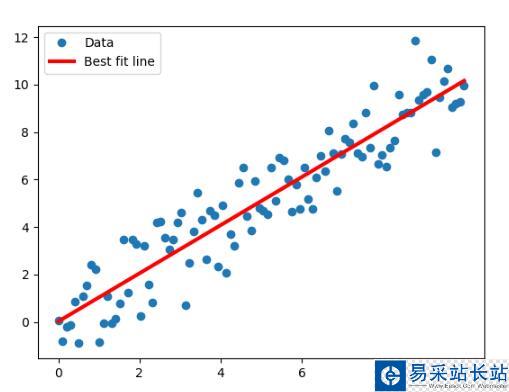采用最小二乘的求逆方法在大部分情况下是低效率的。特别地,当局镇非常大时效率更低。另外一种实现方法是矩阵分解,此方法使用tensorflow内建的Cholesky矩阵分解法。Cholesky矩阵分解法把一个矩阵分解为上三角矩阵和下三角矩阵,L和L'。求解Ax=b,改写成LL'=b。首先求解Ly=b,然后求解L'x=y得到系数矩阵。
1. 导入编程库,初始化计算图,生成数据集。接着获取矩阵A和b。
>>> import matplotlib.pyplot as plt>>> import numpy as np>>> import tensorflow as tf>>> from tensorflow.python.framework import ops>>> ops.reset_default_graph()>>> sess=tf.Session()>>> x_vals=np.linspace(0,10,100)>>> y_vals=x_vals+np.random.normal(0,1,100)>>> x_vals_column=np.transpose(np.matrix(x_vals))>>> ones_column=np.transpose(np.matrix(np.repeat(1,100)))>>> A=np.column_stack((x_vals_column,ones_column))>>> b=np.transpose(np.matrix(y_vals))>>> A_tensor=tf.constant(A)>>> b_tensor=tf.constant(b)
2. 找到方阵的Cholesky矩阵分解。
注意:tensorflow的cholesky()函数仅仅返回矩阵分解的下三角矩阵,因为上三角矩阵是下三角矩阵的转置矩阵。
>>> tA_A=tf.matmul(tf.transpose(A_tensor),A_tensor)>>> L=tf.cholesky(tA_A)>>> tA_b=tf.matmul(tf.transpose(A_tensor),b)>>> sol1=tf.matrix_solve(L,tA_b)>>> sol2=tf.matrix_solve(tf.transpose(L),sol1)
3. 抽取系数
>>> solution_eval=sess.run(sol2)>>> solution_evalarray([[1.01379067], [0.02290901]])>>> slope=solution_eval[0][0]>>> y_intercept=solution_eval[1][0]>>> print('slope:'+str(slope))slope:1.0137906744047482>>> print('y_intercept:'+str(y_intercept))y_intercept:0.022909011828880693>>> best_fit=[]>>> for i in x_vals:... best_fit.append(slope*i+y_intercept)...>>> plt.plot(x_vals,y_vals,'o',label='Data')[<matplotlib.lines.Line2D object at 0x000001E0A58DD9B0>]>>> plt.plot(x_vals,best_fit,'r-',label='Best fit line',linewidth=3)[<matplotlib.lines.Line2D object at 0x000001E0A2DFAF98>]>>> plt.legend(loc='upper left')<matplotlib.legend.Legend object at 0x000001E0A58F03C8>>>> plt.show()
以上这篇使用tensorflow实现矩阵分解方式就是小编分享给大家的全部内容了,希望能给大家一个参考,也希望大家多多支持武林站长站。
新闻热点
疑难解答